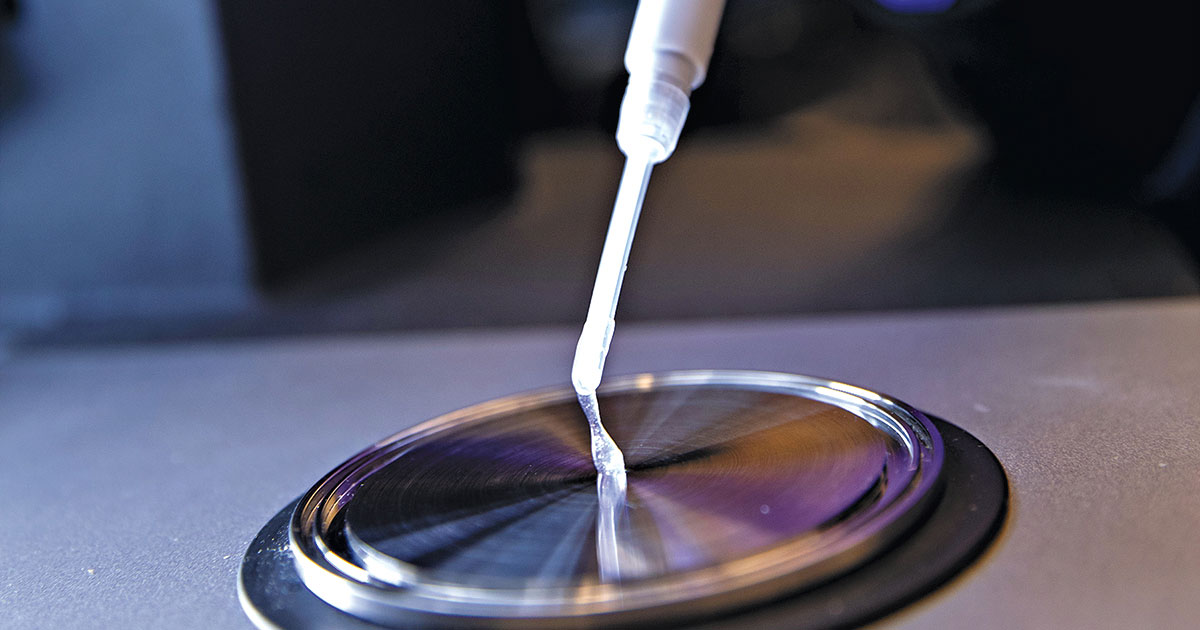Advertisement
Grab your lab coat. Let's get started
Welcome!
Welcome!
Create an account below to get 6 C&EN articles per month, receive newsletters and more - all free.
It seems this is your first time logging in online. Please enter the following information to continue.
As an ACS member you automatically get access to this site. All we need is few more details to create your reading experience.
Not you? Sign in with a different account.
Not you? Sign in with a different account.
ERROR 1
ERROR 1
ERROR 2
ERROR 2
ERROR 2
ERROR 2
ERROR 2
Password and Confirm password must match.
If you have an ACS member number, please enter it here so we can link this account to your membership. (optional)
ERROR 2
ACS values your privacy. By submitting your information, you are gaining access to C&EN and subscribing to our weekly newsletter. We use the information you provide to make your reading experience better, and we will never sell your data to third party members.
Biotechnology
Reactions: Xanthan gum to replicate saliva and reflecting on enantiomer separation
May 23, 2024
| A version of this story appeared in
Volume 102, Issue 16
Letters to the editor
Xanthan gum for xerostomia
A C&EN article describes efforts to create artificial saliva to treat xerostomia, which radiation treatment for head and neck cancers can cause (Dec. 11/18, 2023, page 17). Cancer.net estimates nearly 67,000 new US cases of head and neck cancers in 2023 and over 560,000 worldwide in 2020.
“Radiation therapy for cancer of the head and neck can devastate the salivary glands,” impeding swallowing and taste, a 2008 paper observes. This makes weight maintenance futile and social situations unattractive, lowering quality of life. If glands are too damaged, saliva stimulants, often misnamed saliva substitutes, can have no effect.
An effective, low-cost palliative solution was needed to fill a treatment gap. A 2022 report from patient advocacy groups to the US Food and Drug Administration includes perspectives from xerostomia patients, relatives, and caregivers. A participant reported, “Nothing really works.” The report concludes, “Current xerostomia treatment approaches are ineffective, temporary and costly.” A 2023 StatPearls article says saliva substitutes “do not work reliably” and have limited duration, unpleasant taste, and high cost.
Alla Katsnelson notes in C&EN, “People with xerostomia may benefit from a substance that’s simpler, cheaper, and easier to commercialize than mucins and mucin analogs.” She quotes food and materials scientist Anwesha Sarkar, who asks about replicating “the properties that are useful so you can eat properly and have an excellent quality of life.”
Now, in radiation-induced xerostomia from cancer treatment, mimicking just the rheological properties of natural saliva can meet these objectives.
Saliva viscosity adapts to oral function, thickening to lubricate food for chewing and thinning for swallowing and speech. An unflavored aqueous xanthan gum solution provides this shear dependence; a sip per bite replaces the missing saliva. Xanthan gum is readily available, listed in the US Pharmacopeia, and recognized as safe by the FDA and European Food Safety Authority.
A suitable xanthan gum concentration is 1.6 g/L, International Dysphagia Diet Standardisation Initiative level 1. This provides good mouthfeel, bolus lubrication, and taste. Oral care is separate. Existing xanthan gum thickeners and liquids, used to slow fluid flow to prevent aspiration in people with dysphagia, can also be palliative saliva substitutes.
Even without natural saliva’s complex chemical functions, a xanthan gum solution mimics saliva viscosity, lubricates food, facilitates taste, has no odor or flavor, and is inexpensive. The simple sip-per-bite technique restores swallowing and taste for people whose saliva glands were destroyed in radiation treatment for head and neck cancers.
David B. and Barbara S. Leeson
Los Gatos, California
Separating enantiomers
I read with interest Celia Arnaud’s article in the April 15/22 issue of C&EN (page 7) about the work at the University of Milan to separate racemic mixtures using small polymeric tubes embedded with chiral molecules. I was reminded immediately of work that emerged from the laboratory of the late professor William H. Pirkle, kind of the godfather of chiral chromatography, at the University of Illinois Urbana-Champaign.
I recall standing with Pirkle one day while he handled a small piece of silicone tubing that he used to recycle isopropyl alcohol commonly used as a mobile phase in his chiral chromatography columns. He mentioned to me that he was interested in the fact that the silicone tubing swelled in contact with the alcohol. He thought that perhaps this might act as a membrane to do chiral separations if he circulated a racemic mixture in contact with a chiral resolving molecule.
His thinking, as I recall it, was that the larger complexed enantiomer would not pass through the tubing as easily as the uncomplexed enantiomer would. In this way, he thought, if the tubing acting as a membrane was immersed in isopropyl alcohol, he could resolve racemic mixtures in a continuous process. Working with my former colleague Elizabeth Doherty, he developed a prototype that they patented (US Patent 5,080,795) that described an apparatus and process that they felt might accelerate the separation of racemic mixtures in a continuous process via swellable tubing.
While this is slightly different from the work noted from the University of Milan, I have always been amazed at how Pirkle was able to look at the swollen silicone tubing and apply this to the idea that it might work as a membrane to separate enantiomers. Working with Doherty, he proved it could be done.
James V. Gruber
Washington, New Jersey



Join the conversation
Contact the reporter
Submit a Letter to the Editor for publication
Engage with us on Twitter